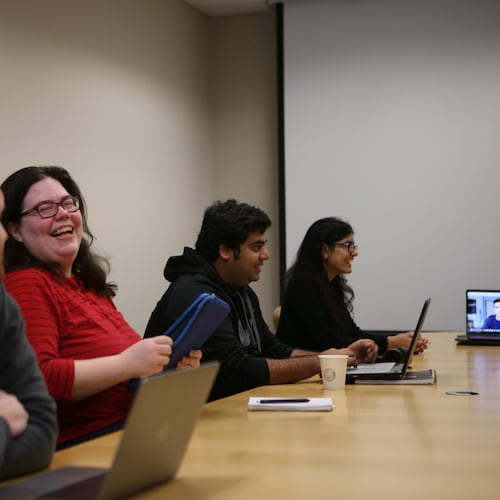“Will I ever use this stuff?”
An honest answer for the vast majority of high school math students is, “You probably won’t.”
That question and answer highlight the dilemma of secondary math education: connecting real-world social and economic benefit to the increasingly rigorous math curriculum taught in the high school classroom.
I teach high school math. My teaching career began as a social commitment after building a successful business.
I can’t remember one time during my business career that I used what I now teach to average high school students.
Imaginary numbers, conic sections and rational functions aren’t the stuff of financial statements, contract negotiations, cash-flow and marketing.
Employer surveys suggest that my experience is commonplace. Robert Lerman, an economics professor and Urban Institute fellow, was quoted in a recent AJC “Learning Curve” column: “Despite the thrust to require algebra II in high school, only 0.09 percent (less than one in a thousand) of workplaces use it.”
Against that backdrop, the Georgia Department of Education heavily invested in the rollout over the past several years of new math standards (math I, et al.) that far exceed the scope and expectations of algebra II.
The new math standards are hyped as integral to a “world-class education,” a nebulous phrase, tough to quantify, but having great public relations value.
The world-class education is to be a 21st-century “jobs machine!”
Of course, there’s no way to accurately project future job growth generated by the new math curriculum.
There is only puffery.
Unknown are the relative effects of globalization draining jobs, the level of local business investment creating jobs and, significantly, the actual employer need for greater work force math skills.
The new math standards might prove out as a case of “all dressed up with no place to go.”
We do have algebra II as a touchstone for potential future work force needs: If we equate workplaces to workers, a wildly optimistic tenfold increase in workplaces requiring only algebra II would add fewer than one-in-100 workers to the work force.
A more realistic twofold increase in algebra II workplaces adds one in 500 workers to the work force. That’s not a jobs machine.
Jobs machine or not, inside the schoolhouse the new curriculum will exacerbate the achievement gap.
Two distinct tracks — accelerated and nonaccelerated — are built into the instructional system; the accelerated track operates at a 50 percent faster clip. In practice accelerated math I & II cover in two years the same content as (nonaccelerated) math I, II & III cover in three years.
Hence, an achievement gap is a built-in feature of the two distinct tracks of math instruction. Kids entering the program behind fall further behind.
On racially and economically diverse campuses, the two disparate classrooms with disparate expectations disproportionately divide along the lines of the usual suspects; white and affluent students in accelerated math I; Black, Latino and poor students in Math I.
In one example of which I’m particularly aware, only 2 percent of the school’s freshmen black males were enrolled in the accelerated track.
How did we arrive at this point in education?
Per Lerman, “We have evolved into this highly academic-based system for all students” — a “college readiness” program for all students.
Nevermind that the core curriculum of the University System of Georgia requires only three math units of the 60 core units required for graduation; 57 other units potentially benefit more from developed language and critical thinking skills. (Certain degree programs and departments do require additional math credits.)
I’m not advocating an end to math, only an end to math for math’s sake.
I am advocating for the option of a high school curriculum of more rigorous “practical math.”
Preparing children for real life is, or at least should be, the goal of education. That requires connecting the curricular dots with demonstrated real-life needs.
The first objective assessment of the new math curriculum will arrive with the 2012 SAT and ACT scores — the first cohort to complete the new high school curriculum.
Gauging the effectiveness of the “jobs machine” will come much later, perhaps several generations later. In the meantime, kids will spend as much as 25 percent or more of the school day in a curriculum that might prove useless to real life.
As a state, we’re operating on blind faith that all will work out when the alternative is so bleak.
Ken Sprague Sr. has taught basic math for special ed students through AP calculus.
About the Author
Keep Reading
The Latest
Featured


